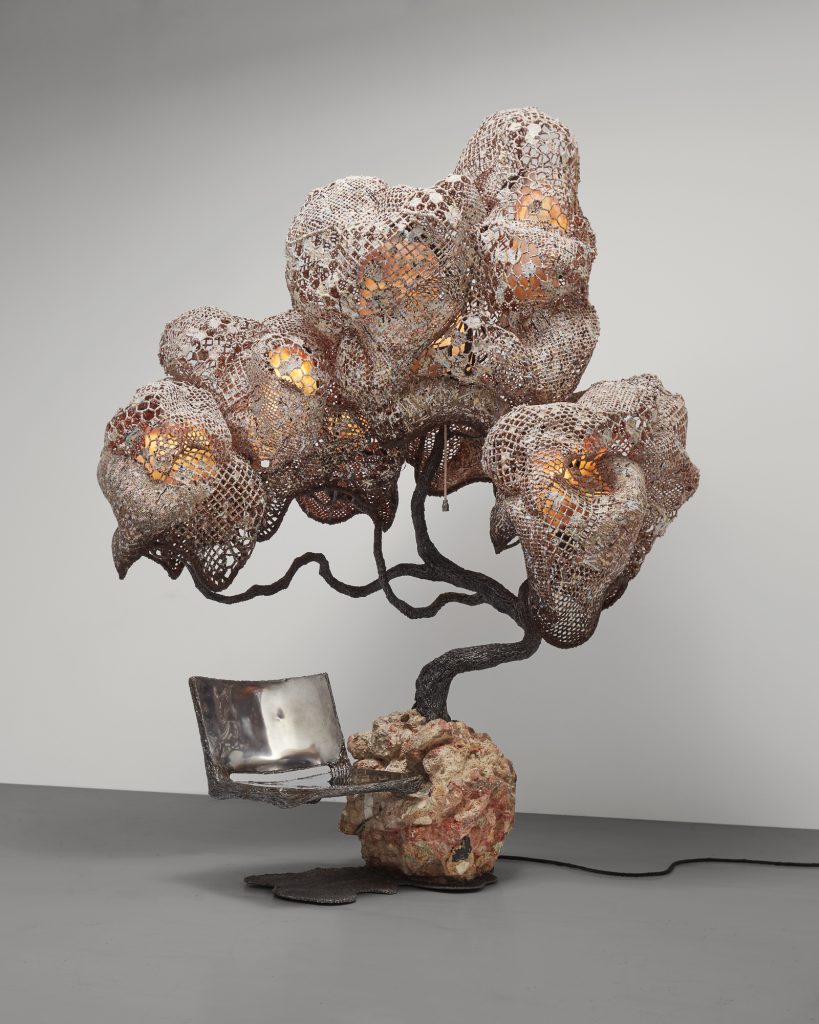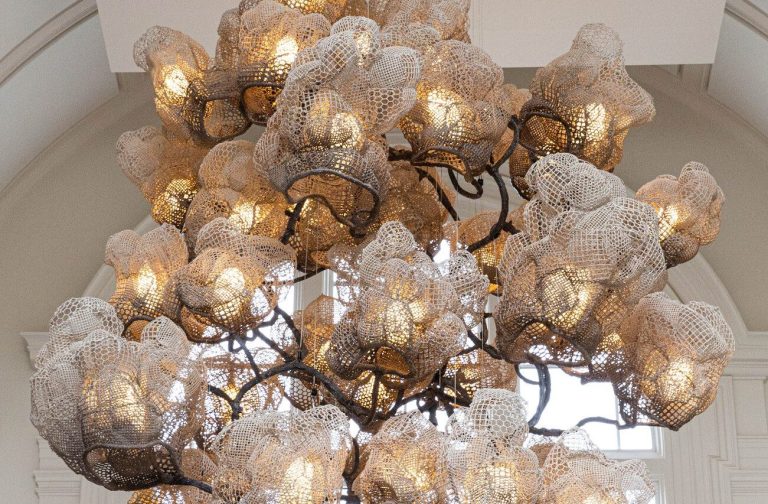
Custom Trono
Photography by RONALD SMITS
Born in Spain, Nacho Carbonell is a revolutionary Eindhoven-based artist who seamlessly blends design and sculpture. Starting his artistic journey with a groundbreaking 2009 Evolution collection and subsequent recognition as a Designer of the Future at Design Miami/Basel in 2010, Carbonell’s work is marked by a tactile approach, using natural materials to create art that breaks the borders of imagination. His signature Cocoon lamps, exhibited at Carpenters Workshop Gallery, encapsulate the surreal magic realism that defines his globally acclaimed creations, showcased in different museums and private collections worldwide.
hube: The Evolution project of 2009 was a turning point in your career. How has your creative process evolved since then, and what continues to inspire your distinctive tactile approach to sculpture? In what way your more recent pieces such as Monumental and Light mesh are different?
Nacho Carbonell: I believe that nothing has remained unchanged. In another way, it feels like everything has changed. I feel a shift in the creative process, some kind of evolution. The way I create things definitely influences the way the end product looks. After all, there should be an understanding of the process, a slow digestion that occurs over a considerable period. While creating the objects, I find myself able to edit and re-edit my ideas.
During the time of working on Evolution, I was exploring the concept of pollution and its connection to what constitutes furniture for me, as opposed to what defines furniture for today’s society and the future. It was a reflection of our evolution and primitive nature simultaneously. I wanted to discuss the overload of information we had and still have.
This idea began shaping the concept of the chair. It has always been a crucial element, inviting the audience and the public to belong to the object. I don’t want the object to be something detached; I want you to engage and have an experience with it. This philosophy has always been deeply embedded in my work.
Hence, the chair and the cuckoo represent the notion of a thought being built in a specific moment – a space where thinking occurs, and you find yourself somewhere you can’t fully comprehend. This idea forms a metaphorical womb, reflecting how our ideas are created.
h: How does each of your sculptures reflect a unique facet of your personality, and how do you infuse your creations with a sense of identity?
NC: In the creation of each sculpture, I try to give it a soul. I perceive them as vessels containing not only my artistic expression but also encapsulating my experiences, both joyful and challenging. They become a reflection, a dynamic mirror capturing the core of my surroundings and the evolving state of my physical and mental self.
The studio, to me, is not just a space; it is an extension of my identity. Showcasing the various stages of evolution in my work is crucial. The studio becomes a manifestation of me, and I become an embodiment of the studio – an inseparable connection.
This symbiosis reveals itself, offering a glimpse into the current moment. The sculptures, like my children being born or influenced by my travels and global events, undergo a transformative process. They mutate, change, and adapt.
Each sculpture becomes a materialisation of my identity, reflecting the intricacies of my personality and the ongoing dialogue between my artistic journey and the world around me.

